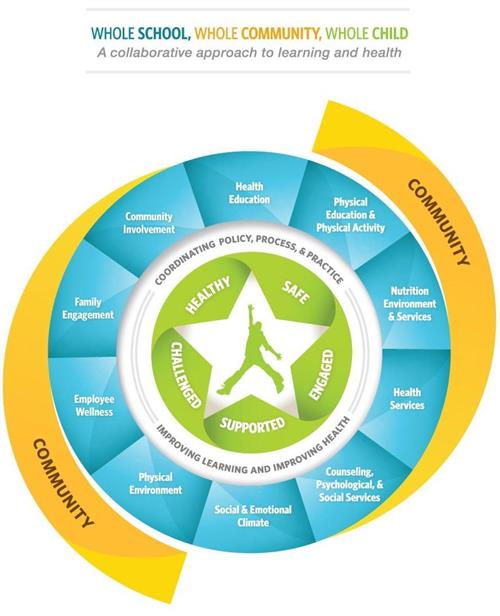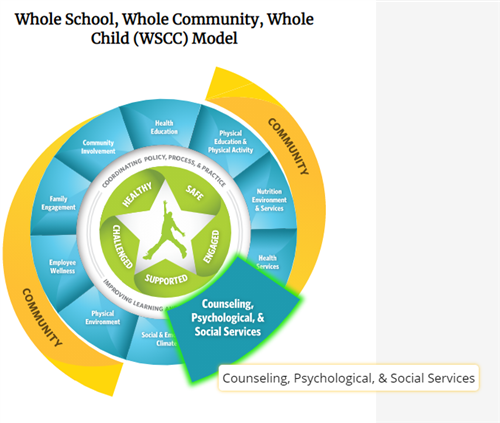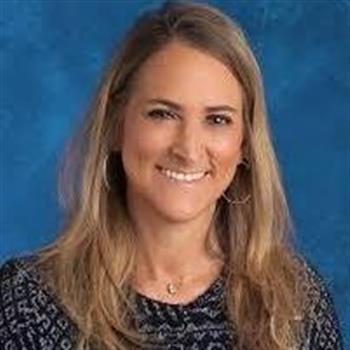Health & Wellness
Page Navigation
School Health Advisory Council
Mission
-
 Texas law (Texas Education Code, Title 2, Subtitle F, Chapter 28, Subchapter A, §28.004) requires the establishment of a School Health Advisory Council for every school district. The SHAC is a group of individuals representing segments of the Waxahachie community, appointed by the school district and Board of Trustees to serve at the district level, to provide advice to the district on coordinated school health programming and its impact on student health and learning.
Texas law (Texas Education Code, Title 2, Subtitle F, Chapter 28, Subchapter A, §28.004) requires the establishment of a School Health Advisory Council for every school district. The SHAC is a group of individuals representing segments of the Waxahachie community, appointed by the school district and Board of Trustees to serve at the district level, to provide advice to the district on coordinated school health programming and its impact on student health and learning.SHAC plays an essential role in strengthening the connection between health and learning.
The SHAC provides an efficient, effective structure for creating and implementing age-appropriate, sequential health education programs, and early intervention and prevention strategies that local families and community stakeholders can easily support.
The mission of the Waxahachie ISD SHAC, in partnership with the staff, parents, and community, is to advise the Waxahachie ISD Board of Trustees on coordinated and age-appropriate school health programming that motivates and promotes healthy lifestyles for all.
If you are interested in serving as a parent/community member on the School Health Advisory Council, please email either Melissa Bousquet or Ginger Robinson. Your input as a parent and/or community member is extremely valuable and would be greatly appreciated. For further information or clarification of information, please contact the Director of Health & Wellness.
Model
-
 The Waxahachie ISD SHAC follows the Whole School, Whole Community, Whole Child model, which is the CDC’s framework for addressing health in schools. The WSCC model is student-centered and emphasizes the role of the community in supporting the school, the connections between health and academic achievement, and the importance of evidence-based school policies and practices.
The Waxahachie ISD SHAC follows the Whole School, Whole Community, Whole Child model, which is the CDC’s framework for addressing health in schools. The WSCC model is student-centered and emphasizes the role of the community in supporting the school, the connections between health and academic achievement, and the importance of evidence-based school policies and practices.10 Components of the WSCC Model
- Community Involvement
- Health Education
- Physical Education & Activity
- Nutrition Environment & Services
- Health Services
- Counseling, Psychological & Social Services
- Social & Emotional Climate
- Physical Environment
- Employee Wellness
- Family Engagement
Counselors
-

WISD school counselors are vital representatives of the School Health Advisory Council. The district counseling team offers prevention and intervention services to support the mental, behavioral, and social-emotional health of students and promote success in the learning process.
Services include direct and indirect interventions to address psychological, academic, and social barriers to learning, such as individual or group counseling and consultation; and referrals to school and community support services as needed.
WISD school counselors serve as committee members and assist in the SHAC's decision-making process. These committees gather information, analyze available data, make recommendations to SHAC, and report to SHAC for recommendations to the school board.
Instruction
-
One of the duties of the SHAC includes recommending appropriate grade levels and methods of instruction for human sexuality instruction.
The WISD school board shall select any instruction relating to human sexuality, sexually transmitted diseases, human immunodeficiency virus (HIV), or acquired immune deficiency syndrome (AIDS) with the advice of the SHAC. The instruction must:
- Present abstinence as the preferred choice of behavior for unmarried persons of school age;
- Devote more attention to abstinence than to any other behavior;
- Emphasize that abstinence is the only method that is 100 percent effective in preventing pregnancy, sexually transmitted diseases, infection with HIV or AIDS, and the emotional trauma associated with adolescent sexual activity;
- Direct adolescents to a standard of behavior in which abstinence before marriage is the most effective way to prevent pregnancy, sexually transmitted diseases, and infection with HIV or AIDS; and
- Teach contraception and condom use in terms of human use reality rates instead of theoretical laboratory rates, if instruction on contraception and condoms is included in the curriculum.
The WISD school board has approved the WISD counseling team to teach:
- Play It Safe curriculum in grades PreK-5
- Choosing The Best curriculum in grades 6-9
These curriculums are designed to be developmentally age-appropriate to each specific grade level and are available for parent review in the WISD Teaching, Learning, and Instruction Department.
Promoting Healthy Lifestyles
-
SHAC Helps Students
The SHAC is instrumental in improving student health and creating healthy schools by:
- Helping all WISD schools meet community involvement mandates and community expectations,
- Providing a way for community members to work together with school personnel to accomplish district goals,
- Utilizing community resources and assets,
- Influencing people within a community to be a credible, collective voice for healthy children and youth,
- Providing a forum for sharing youth health information, resources, perspectives, and a range of advice,
- Fostering member’s personal satisfaction and understanding of their role in strengthening their community by supporting coordinated school health, and
- Fostering cooperation by building trust and consensus among grassroots organizations, community segments, and diverse citizens.
-
Bylaws
-
Handbook
-
Meetings
The WISD SHAC Meetings are held in the WISD Administration Building at 411 N. Gibson Street. The meetings are held at 11:30 am on scheduled Thursdays throughout the school year. All meetings are open to the public.
- October 2, 2025
- January 15, 2026
- February 26, 2026
- April 9, 2026
- May 14, 2026
Dates are subject to change.
-
Minutes
- October 2025 • Video Link
- April 2025 • Video Link
- January 2025 • Video Link
- November 2024 • Video Link
- September 2024 • Video Link
- May 2024 • Video Link
- February 2024 • Video Link
- January 2024 • Video Link
- November 2023 • Video Link
- September 2023 • Video Link
- April 2023 • Video Link
- February 2023 • Video Link
- January 2023 • Video Link
- November 2022 • Video Link
- September 2022 • Video Link
- April 2022 • Video Link
- February 2022 • Video Link
- January 2022 • Video Link
-
Responsibilities
The SHAC must address the responsibilities outlined in Title 2, Chapter 28, Section 28.004 of the Texas Education Code. However, the WISD SHAC strives to address all eight components of a coordinated school health program as listed here:
- health instruction,
- the healthy school environment,
- health services,
- physical education,
- school counseling,
- food service,
- school site health promotion for faculty and staff; and
- involvement with parents and the community.
-
Wellness Plan
Have questions? We can help.
- Administraton
- TLI
| Showing results for "Professor named Smith at Elementary School" |

- Melissa Bousquet, RN BSN

- Ginger Robinson

